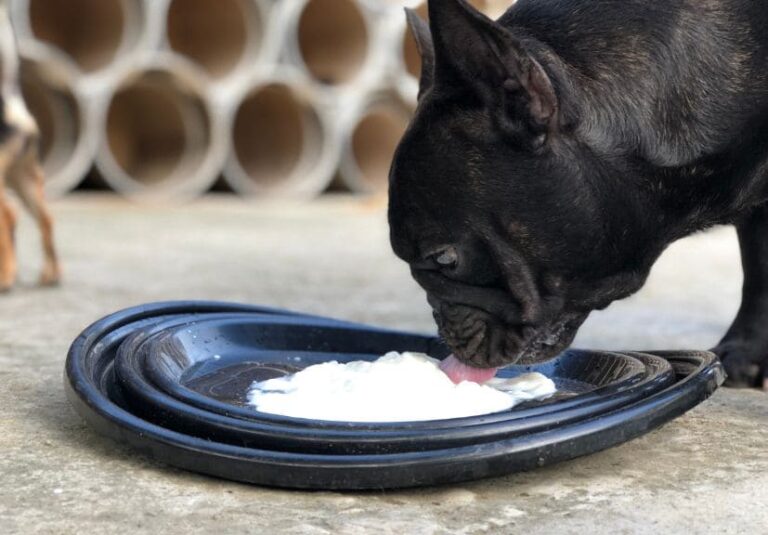Nutritional Benefits of Chicken for Dogs
Chicken is an excellent source of lean protein, making it a highly nutritious addition to your dog’s diet. Protein helps dogs build and repair muscles, providing energy for daily activities. Chicken also contains essential amino acids, omega-6 fatty acids, and glucosamine, which support skin health, shiny coats, and joint function.
Deboned chicken in dog food is a premium ingredient because it eliminates the risk of bone splinters while providing pure protein. Many dog foods, like shredded chicken dog food, rely on deboned chicken as their primary protein source. If you’re feeding chicken-based dog food, it’s a great way to ensure your dog gets high-quality nutrients.
Raw vs. Cooked Chicken: What’s Safer?
The debate over raw vs. cooked chicken for dogs is ongoing. Both options have their pros and cons, so it’s essential to weigh them carefully.
- Raw Chicken: Many dog owners feed their pets a raw diet, which includes raw chicken. Advocates claim that raw chicken dog food mimics a dog’s natural diet in the wild. Raw chicken hearts, raw chicken wings, and raw gizzards are commonly included in raw dog diets. However, raw chicken poses risks such as bacterial contamination (like salmonella), which can make both dogs and humans sick.
- Cooked Chicken: Cooking chicken eliminates harmful bacteria, making it a safer option. You can boil or grill chicken for your dog, but always avoid adding seasoning or oil. Plain, boiled chicken breast is an ideal option. Wondering how to prepare it? Check out our guide on how to boil chicken breasts for dogs. Cooked chicken feet, cooked chicken necks, and cooked gizzards can also be safe when served without seasoning.
Chicken Pieces Safe and Unsafe for Dogs
Not all parts of the chicken are equally safe for dogs to eat. Let’s break down which pieces are safe and which are best avoided:
- Safe Pieces:
- Chicken breasts: Lean and boneless, these are the safest option.
- Chicken thighs: Rich in nutrients but be sure to remove the bones if cooked.
- Chicken feet: Both raw and cooked chicken feet can be nutritious treats, providing glucosamine for joint health.
- Chicken hearts and gizzards: Packed with protein and essential nutrients, they can be served raw or cooked. Be sure to monitor portions.
- Unsafe Pieces:
- Cooked bones: Never feed your dog cooked chicken bones, as they can splinter and cause choking or digestive issues. This includes chicken drumsticks, chicken legs, and chicken wings.
- Chicken skin: High in fat, which can lead to pancreatitis in dogs. Remove the skin before serving.
- Seasoned chicken: Spices, salt, and oils are not safe for dogs. If you’re cooking for your dog, keep it plain.
Best Ways to Serve Chicken to Your Dog
Chicken can be served to dogs in various forms, depending on their diet and preferences. Here are some of the best ways to feed chicken to your dog:
- Boiled Chicken: Boiling chicken is one of the healthiest ways to prepare it for your dog. Simply boil boneless chicken breasts or thighs, shred them, and mix them into your dog’s regular food. If you’re wondering where to buy boiled chicken, you can easily prepare it at home, or some pet-friendly grocery stores may carry pre-boiled chicken without additives.
- Frozen Chicken: Frozen chicken is convenient for raw feeders. You can feed your dog frozen chicken legs, wings, or even drumsticks. If you’re asking, “Can dogs eat frozen chicken legs?” the answer is yes, as long as they are raw and uncooked.
- Ground Chicken: Ground chicken is easy to prepare and digest. It can be boiled or grilled and added to your dog’s regular meals. Ground chicken for dogs is also ideal for puppies or senior dogs who may have trouble chewing larger pieces.
- Chicken Hearts and Gizzards: Raw chicken hearts and gizzards are excellent sources of protein and nutrients. If you’re wondering how many chicken hearts a dog can eat per day, start with small amounts and consult your vet for specific recommendations.
Potential Risks of Feeding Chicken
While chicken is a healthy protein source, there are some risks you should be aware of:
- Raw Chicken Bones: Although some dog owners swear by feeding their dogs raw chicken bones, this practice is controversial. While raw bones are less likely to splinter than cooked bones, there’s still a risk of choking or causing gastrointestinal blockages. If you’re wondering, “Can dogs eat raw chicken thigh bones?” the answer is yes, but under strict supervision. Make sure to monitor your dog to avoid any accidents.
- Allergies: Some dogs may develop allergies or food sensitivities to chicken. Common symptoms include itching, vomiting, or diarrhea. If you notice these signs after feeding your dog chicken, it’s best to consult your vet.
- Pancreatitis: High-fat chicken parts like skin or heavily processed chicken (like fried chicken) can cause pancreatitis, a painful and potentially life-threatening condition.
What to Do if Your Dog Has an Adverse Reaction
If your dog shows signs of illness after eating chicken, such as vomiting, diarrhea, or lethargy, contact your veterinarian. They may advise stopping chicken temporarily or suggest alternatives. Allergic reactions can develop at any time, so it’s crucial to introduce new foods gradually.
For dogs with sensitive stomachs, lean chicken breasts or thighs are the safest option. Always remove bones and fatty skin to prevent digestive issues.
Chicken Treats and Recipes for Dogs
There are plenty of ways to get creative with chicken when feeding your dog. Here are a few ideas:
- Real Chicken Dog Treats: You can find store-bought options like Oinkies real chicken treats or make your own by baking or dehydrating chicken strips.
- Chicken Stew Recipe for Dogs: A homemade chicken stew can be a hearty meal for your dog. Combine boiled chicken, vegetables (like carrots and green beans), and rice or sweet potatoes for a balanced, healthy dish.
- Chicken and Peanut Butter Dog Treats: Dogs love peanut butter! Try combining cooked, shredded chicken with peanut butter for a tasty treat.
Conclusion
Chicken is a versatile, nutritious protein source for dogs when prepared properly. Whether you choose to feed your dog cooked or raw chicken, make sure you avoid dangerous parts like cooked bones or seasoned skin. Introducing chicken-based dog food, real chicken treats, or homemade meals can be a great way to enhance your dog’s diet.
Remember to consult your veterinarian before making any significant changes to your dog’s diet, especially if they have underlying health issues or dietary sensitivities.
FAQ Section
Can dogs eat chicken feet raw or cooked?
Yes, both raw and cooked chicken feet are safe for dogs and provide beneficial nutrients like glucosamine for joint health.
Are chicken necks safe for dogs?
Yes, raw chicken necks can be a good treat for dogs. However, avoid feeding cooked chicken necks, as the bones may splinter.
Can dogs eat raw chicken drumsticks?
Yes, raw drumsticks are safe but always supervise your dog while eating raw bones.
How many chicken hearts can a dog eat per day?
Start with 1-2 chicken hearts per day for small dogs and 3-4 for larger dogs. Always consult your vet for specific dietary advice.
Can puppies eat chicken?
Yes, puppies can eat chicken, but start with small portions of boiled chicken to ensure they digest it properly. Chicken puppy food can also be an amazing treat for them.




